The Seven Stunning Megalithic Sites Celebrate the Winter Solstice
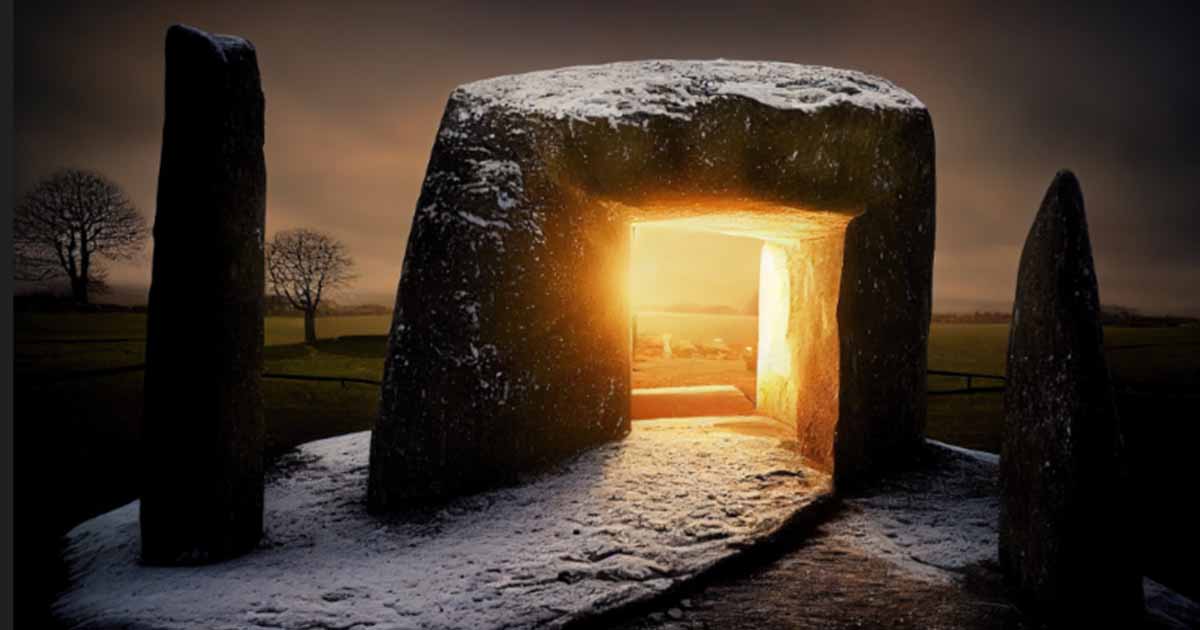
The winter solstice marks the shortest day and longest night of the annual cycle centered around 21st December; a turning point of the year venerated by ancient cultures worldwide. Accurately built into sophisticated megalithic monuments, this alignment has now been recorded in temples that date to nearly 12,000 years ago. Hugh Newman reveals seven remarkable ancient sites aligned to the winter solstice that can still be visited today.
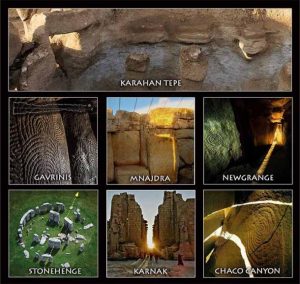
Seven sites around the world that incorporate the Winter Solstice alignment. (Hugh Newman/Megalithomania)
Every year, on December 20th-23rd the sun reaches the most southerly point on the horizon, appearing to rise in the same location for a few days. Solstice literally means ‘standstill of the sun’ and the sunrise appears to do just this.
Christmas marks the time when the sun is reborn and longer days return with the solar orb beginning to move northwards on the horizon, heading towards the spring equinox and summer solstice. This was noted by early astronomers throughout the world and built into stone structures, with some so accurately aligned, the phenomenon can still be witnessed in them today.
Winter Solstice Resurrection At Saqsayhuaman and Newgrange
Ley Hunters: Were Bronze Age Britons Really Following Ley Lines?
Due to the obliquity of the ecliptic the sunrise has changed over millennia, having moved very slightly north on the horizon from where it rose in ancient times, but the difference is so small that many ancient temples that recorded this extreme point of the solar cycle still function and can be viewed today. The winter solstice also marks the time of year when the earth’s annual ‘wobble’ reaches its most northerly point, where we are the furthest away from the sun, hence the cold weather and shorter days.
In this article we focus on ancient sites that are in the northern hemisphere (in the southern hemisphere, it would be the summer solstice), proving that cultures all cross this part of the world during different epochs, understood the importance of marking this particular time of year.
Megalithic Structures: Stone Records of Solstice Significance
The winter solstice marked the change of the seasons and the beginning of a new cycle. It enabled calendars to be reset, and celebrations took place in a ritualized manner in an attempt to bring back the light, with the hope that the warmth and fertilizing nature of the sun would return to their lives. Festivities, celebrations, fire ceremonies and dances took place whilst waiting for the darkness to come to an end. These customs were ubiquitous and were so important to the builders of megalithic structures they recorded them in stone.
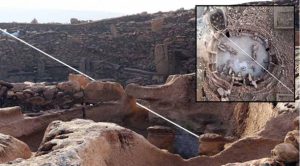
The Karahan Tepe winter solstice alignment first witnessed on 20th December, 2021. (© H. Newman)
1. Karahan Tepe, Şanlıurfa, Turkey, 9400 BC
In December 2021 the author and JJ Ainsworth discovered the oldest known winter solstice alignment recorded anywhere on Earth. Dating to a staggering 11,400 years ago Karahan Tepe, the sister site to Göbekli Tepe in southeast Turkey, revealed its long lost secrets on the morning of December 20th of that year. Having only recently been excavated, this was the first time enough of the multiple-enclosure site had been opened up to prove any such alignments could exist.
At ten minutes after sunrise, we noticed a blade of light on the side of a protruding stone head in Structure AB (the Pillar Shrine) a sunken area containing 10 upright phallic-shaped monoliths carved from bedrock and one free-standing monolith. On its southeastern edge, a carved hole, shaped from bedrock, leads into the main enclosure. It is through this that the winter solstice sunrise light beamed through illuminating the stone head over a 45-minute period. It was later determined, using sophisticated astronomical software, that it would have been even more impressive in 9400 BC, illuminating more of the stone head than it does today. However, the fact that this can still be witnessed today, makes it the most important, and by far the oldest example of how the ancients built megalithic sites to mark this turning point of the year.
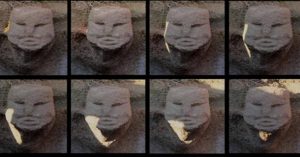
Karahan Tepe 21st December 2022. Showcasing the full process of sunlight shining through the porthole stone onto the stone head in the Pillar Shrine. (Structure AB) (© H. Newman)
2. Gavrinis, Brittany, France, 4200 BC
A beautifully decorated megalithic tomb on this island of Gavrinis in the Morbihan Gulf of Brittany hides a unique winter solstice phenomenon. Not only does it precisely align to the shortest day’s sunrise, it also incorporates the extreme southerly position of the moon every 18.6 years, just as accurately. A laser like beam runs along the floor of the chamber and hits the left side of two stones which form the back wall and as the light slowly widens and sinks, it illuminates only the left stone before it hits the floor. Whereas the stone at the top right receives moonlight every 18.6 years when it rises at its most southerly point.
Other sites in the Carnac area include the Crucuno Quadrilateral megalithic site (4000 BC) which incorporates the winter and summer Solstices to its corners. It is laid out as a 3-4-5 Pythagorean geometry which also marks the angles of the solstices at this latitude. Dolmen de Rondossec has two chambers aligned to the winter solstice where the back stone gets illuminated by the rising sun.

Main photo: Interior of Garvins on the winter solstice. Inset. The alignment showing how the sun and the moon enter the chamber. (© H. Newman)
3. Mnajdra and Ħaġar Qim Temples, Malta, 3600 – 3400 BC
In Malta, the megalithic temples of Mnajdra and Ħaġar Qim have winter solstice alignments built into their structures. Mnajdra (3400 BC) has a primary orientation eastward to the equinoxes, but during the winter solstice sunrise a dagger of light forms illuminating a vertical slab on the right side of the first apse. On the summer solstice it appears on the left side of the apse. It appears that this temple was designed as a calendar marking the movement of the sun throughout the annual cycle.
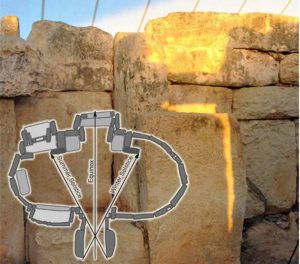
Mnajdra’s winter solstice phenomenon reveals a dagger of light illuminating a vertical slab on the right side of the first apse. Inset: Diagram showing the full sequence of alignments throughout the year. (© H. Newman)
The main temple of Ħaġar Qim (3600 BC) has an entrance orientated directly to the winter solstice. Direct sunlight passes through the main doorway and falls on the main altar. As the sun rises higher, it shifts to the left side along the main corridor and reaches the total length of the passageway before it begins to retreat.
4. Newgrange, County Meath, Ireland, 3200 BC
The world’s most famous winter solstice alignment is found in the Boyne Valley of Ireland at the remarkable Neolithic tomb of Newgrange. The phenomenon was only discovered in 1967 and begins 4 minutes after sunrise and lasts for a total of 17 minutes.
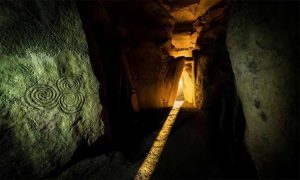
The interior of Newgrange on the winter solstice. (© Anthony Murphy)
The sun’s light passes through a very small holed stone (light box) above the main entrance, illuminating the passageway and roofed chamber, highlighting certain carvings and a stone bowl on its way through. The original Gaelic name of Newgrange, An Uanh Greine, means ‘Cave of the Sun.’ the nearby contemporary site of Dowth records the winter solstice sunset, whilst Knowth is aligned to the equinoxes.
How Ancient People Marked the Equinox Around the World
Stonehenge and the Hopi: Hidden Messages Connecting Sacred Sites
5. Stonehenge, Wiltshire, UK, 2700 BC
Stonehenge, famous for its summer solstice sunrise alignment, is also aligned to the winter solstice sunrise. There is a direct sightline that runs through the monument aligning along the ‘Altar Stone ’ going through a deliberately carved notch (which frames it perfectly), pointing directly at the rising point of the sun over Coneybury Hill in the distance.
Britain’s national temple also contains a perfect winter solstice sunset orientation matching the direction of the avenue (exactly opposite to the summer solstice sunrise). Feasting and community gathering also took place over the winter solstice at nearby Durrington Walls.
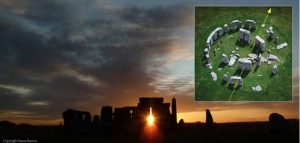
The alignment of the winter solstice sunrise at Stonehenge. (© Simon Banton. Inset: Tim Daw)
6. Karnak, Luxor, Egypt, 2055 BC
At the massive megalithic temple of Karnak in Egypt the rising sun of the winter solstice shines between two massive pillars, casting a bright beam of light through the complex for a total of 25 minutes. The sun continues on to pierce the Sanctuary of Amun Ra, before reaching the ‘Holy of Holies’ in the heart of the site.
Numerous other temples align to the solstices and equinoxes in ancient Egypt, as well as specific sacred days of particular gods and pharaohs. For example, at Aswan’s Abu Simbel the sun’s rays fall directly onto the temple of King Ramses II between 20th – 22nd February when the king was crowned, and between 20th – 22nd October, when he was born. Hundreds of other such alignments were built into temples across the country.
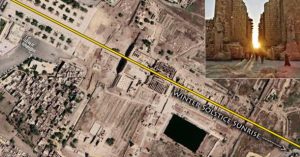
Karnak Temple winter solstice sunrise alignment. (Google Earth/Wikimedia Commons)
7. Chaco Canyon, New Mexico, US, 490 AD
At Fajada Butte at Chaco Canyon in New Mexico, a small, yet remarkable petroglyph of a spiral or labyrinth records a blade of light entering from a thin gap between three large leaning rocks, marking both the solstices. In 1977 artist Anna Sofaer noticed that on the winter solstice, two ‘daggers’ of light form on either side of the petroglyph for a total of 49 minutes, during which they precisely frame the spiral. This takes place in the late morning. On the summer solstice one ‘light dagger’ illuminates the central axis of the spiral, indicating a rudimentary but clever solar calendar created by the Anasazi people of the area.
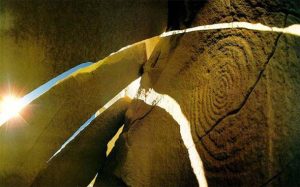
Winter solstice sunlight illuminating the outside edges of the labyrinth carving at Chaco Canyon. Photo: Wikimedia commons
Conclusion
The sites listed above are only a small percentage of megalithic sites that are oriented to the winter solstice. In Britain, for example, the Neolithic long barrow of Stoney Littleton in Somerset orients to its sunrise and Maeshowe Chambered Tomb on Orkney orients to its sunset.
Glastonbury Tor, when viewed from Windmill Hill, appears to have the sun rise up the edge of the shaped hill before finally resting on St. Michael’s Tower on top. Meanwhile, on Rapa Nui (Easter Island) a system of holes bored in the rock at the Orongo ruins indicate the December 21st solstice (summer solstice in the southern hemisphere).
In Vermont in North America, Calendar ll, a mysterious megalithic chamber orients to the winter solstice sunrise, whilst the coiled tail of Serpent Mound in Peebles, Ohio is aligned to the sunset.
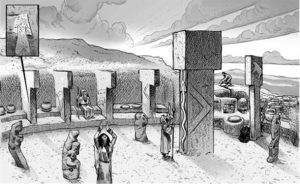
Suggestive scene from Karahan Tepe celebrating the winter solstice. (Dan Lish)
Machu Picchu in Peru has numerous alignments built into its structure which includes the winter and summer solstices. However, to find evidence of the oldest recorded winter solstice alignment going back to the end of the last Ice-Age at Karahan Tepe, this strongly suggests our distant ancestors understood how important it was to mark this time of year, a legacy that has reached us in the current era, and thankfully it can still be celebrated today at many of the sites outlined in this article.
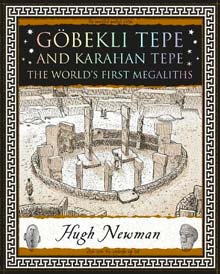
Hugh Newman is the author of Göbekli Tepe and Karahan Tepe: The World’s First Megaliths (2023), Earth Grids (2008), Stone Circles (2017) and co-author of Giants On Record: America’s Hidden History, Secrets in the Mounds and the Smithsonian Files (2015), The Giants of Stonehenge and Ancient Britain (2021), Megalith: Studies In Stone (2018) and Geomancy (2021). He is an explorer, Megalithomania Conference organizer and tour/expedition leader. He has appeared on History Channel, Discovery, Gaia TV, Smithsonian Channel and Science Channel